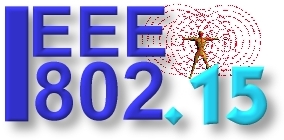The IEEE 802.15 Low
Rate Alternative PHY Task Group (TG4a) for Wireless Personal Area Networks (WPANs) has defined a project for an amendment to 802.15.4
for an alternative PHY.
The principle
interest is in providing communications and high precision ranging / location
capability (1 meter accuracy and better), high aggregate throughput, and
ultra low power; as well as adding scalability to data rates, longer range,
and lower power consumption and cost. These additional capabilities over the existing 802.15.4 standard are expected to enable
significant new applications and market opportunities.
Historical
In March 2004, 802.15.4a
became an official Task Group; with its committee work tracing back to
November 2002. The committee has completed its efforts to draft an alternate
PHY specification for the applications identified in accordance with the project
timeline adopted at start of the task group.
In March 2005, TG4a
selected a baseline specification without enacting our down-selection
procedures, and as a result, confirmed the baseline with 100% approval. The
baseline consisted of two optional Phys consisting of a UWB Impulse Radio
(operating in unlicensed UWB spectrum) and a Chirp Spread Spectrum (operating
in unlicensed 2.4GHz spectrum).
On December 2005 TG4a sent the draft standard
to Working Group letter ballot with the final recirculation ending on 24
August 2006 with a cumulative vote of 158 affirmative votes, 19 negative
votes, and 19 abstentions; the ballot carried allowing the draft to be sent
to Sponsor Ballot.
On the 31 August,
P802.15.4a went out to Sponsor Ballot with the final recirculation closing on
27 January 2007. Since the cumulative vote
on P802.15.4a was 96 affirmative votes, 2 negative votes, and 13 abstentions
the ballot carried and P802.15.4a was allowed to proceed to RevCom for review.
On the 22 March 2007; P802.15.4a was approved as a new amendment to IEEE Std
802.15.4-2006 by the IEEE-SA Standards Board.
